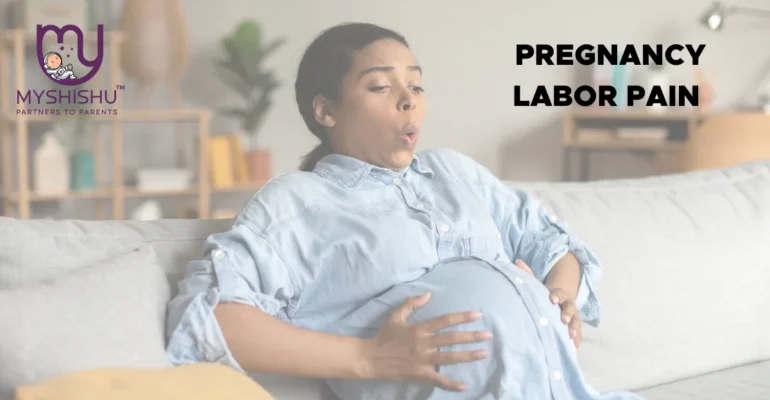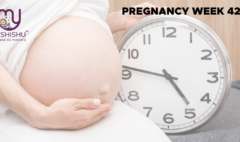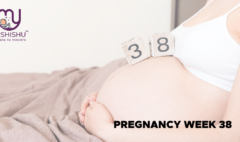A Comprehensive Guide to Pregnancy Labor Pain Symptoms
A Comprehensive Guide to Pregnancy Labor Pain Symptoms
Introduction
Pregnancy is a transformative journey, culminating in the miracle of childbirth. As the due date draws near, understanding the nuances of pregnancy labor pain symptoms is essential for expectant mothers. In this guide, we’ll unravel the intricacies of the impending labor process, helping you approach this transformative experience with confidence and knowledge. From early signs to managing labor pain, let’s explore each step of this extraordinary journey together.
Recognizing the Pregnancy Labor Pain
The onset of labor is a pivotal moment in pregnancy, marked by distinct signals that herald the imminent arrival of a newborn. One primary indicator is the onset of contractions. These contractions, different from Braxton Hicks, intensify in both frequency and strength. Additionally, back pain, often described as rhythmic discomfort, may accompany contractions.
Cervical changes play a crucial role too. Effacement, the thinning of the cervix, and dilation, the opening of the cervix, signify that pregnancy labor pain is progressing. As labor initiates, the mucus plug, known as the “show,” may be expelled, signaling the approaching delivery. Recognizing these early signs empowers expectant parents to embark on the next phase of their extraordinary journey with informed anticipation.
Recognizing the Symptoms of Going into Labor
- Contractions
- Back Pain
- Cervical Changes
- Mucus Plug Release
- Water breaking
- Increased Pressure
- Nesting Instinct
The Three Stages of Labor
- First Stage: Early Labor and Active Labor
Early Labor: During the initial phase of labor, contractions begin and gradually increase in frequency and intensity. These contractions help the cervix efface (thin) and dilate (open). This stage can last for several hours, and expectant mothers should rest, stay hydrated, and conserve energy.
Active Labor: As contractions intensify, the active phase begins. The cervix continues to dilate, reaching around 6 to 10 centimeters. Contractions become more powerful, last longer, and occur more frequently. This stage marks a crucial transition, and healthcare providers closely monitor the progression.
- Second Stage: Transition and Pushing
Transition: Transition is the shorter but more intense phase where the cervix fully dilates. Contractions peak in strength and frequency. Many women experience a surge of adrenaline and may feel a heightened emotional state. The transition is a significant milestone, signaling the imminent approach of the pushing stage.
Pushing: The second stage culminates in the pushing phase, where the mother actively participates in delivering the baby. With each contraction, the mother pushes, guided by healthcare providers. This stage continues until the baby is born, marking the culmination of pregnancy labor pain.
- Third Stage: Delivery of the Placenta
After the baby’s arrival, the third stage focuses on delivering the placenta. While it may seem less eventful, it’s a crucial step in the process. Contractions persist, facilitating the placenta’s separation from the uterine wall. Healthcare providers ensure that this stage is completed successfully and that the mother is stable post-delivery.
Understanding these three stages provides expectant parents with insights into the incredible journey of childbirth. Each stage brings unique challenges and triumphs, underscoring the resilience and strength inherent in the miraculous process of bringing a new life into the world.
Monitoring Your Baby During Labor: A Crucial Aspect of Childbirth
As the miraculous journey of childbirth unfolds, ensuring the well-being of both mother and baby takes center stage. Here’s a detailed exploration of how healthcare providers vigilantly monitor your baby during labor:
- Electronic Fetal Monitoring (EFM):
- External Monitoring: Employing straps with sensors on the mother’s abdomen, this method tracks the baby’s heart rate and the frequency and intensity of contractions. It provides continuous real-time data, allowing healthcare professionals to assess the baby’s response to the labor process.
- Internal Monitoring: In some cases, internal monitoring may be necessary. A small electrode is attached to the baby’s scalp through the cervix, offering more precise measurements of the fetal heart rate.
- Doppler Ultrasound:
- This non-invasive technique utilizes ultrasound to assess the baby’s heart rate. It’s often employed intermittently and is a valuable tool for obtaining additional information about the baby’s well-being.
- Amniotic Fluid Assessment:
- Regular checks on the levels and clarity of amniotic fluid help healthcare providers gauge the baby’s well-being. Abnormalities in amniotic fluid levels could indicate potential issues and prompt action can be taken.
- Maternal Vital Signs:
- Monitoring the mother’s blood pressure, pulse, and oxygen levels is crucial, as changes in these vital signs can impact the baby’s oxygen supply. Sudden fluctuations can be indicative of potential complications.
- Regular Progress Checks:
- Healthcare providers routinely assess the progress of labor, ensuring it aligns with established benchmarks. This includes monitoring cervical dilation, effacement, and the baby’s descent through the birth canal.
Continuous monitoring enables healthcare teams to promptly identify and address any concerns, ensuring a safe and positive birthing experience for both mother and baby. It exemplifies the commitment to providing comprehensive care, making childbirth a well-supported and monitored process.
Caring for the Perineum During Birth: Nurturing a Vital Area
As the pregnancy labor pain process unfolds, the perineum—the area between the vagina and anus—requires special attention and care to minimize discomfort and promote healing. Here’s a detailed look at how healthcare providers and expectant mothers collaborate to ensure optimal perineal care during childbirth:
- Warm Compresses:
- Applying warm compresses to the perineum helps to increase blood flow and relax the tissues, reducing the risk of tearing during delivery. This gentle approach eases the stretching of the perineal muscles.
- Massage Techniques:
- Perineal massage, typically performed during the weeks leading up to childbirth, can enhance the flexibility of the tissues. This practice aims to reduce tension and improve the perineum’s ability to accommodate the baby’s passage.
- Controlled pushing:
- Healthcare providers often encourage controlled pushing during the second stage of labor. This approach allows for a gradual descent of the baby, reducing the likelihood of rapid and intense stretching that could lead to perineal trauma.
- Positioning:
- Certain birthing positions, such as squatting or hands-and-knees, may help alleviate pressure on the perineum and promote a more controlled delivery. Healthcare providers may suggest positions that best suit the mother’s comfort and the birthing process.
- Supportive Guidance:
- Experienced healthcare professionals guide effective pushing techniques, emphasizing pauses between contractions to allow the perineum time to stretch gradually. This supportive approach helps prevent sudden, excessive stretching that could result in tearing.
- Perineal Protection:
- In some cases, healthcare providers may use perineal protection techniques, such as applying pressure to the perineum or using warm compresses during crowning, to facilitate a controlled and gentle delivery.
- After delivery, postpartum perineal care is essential. Keeping the area clean and using peri bottles for gentle cleansing can aid in the healing process. Additionally, sitting on comfortable cushions and using cold packs may help reduce swelling and discomfort.
Caring for the perineum during birth is a collaborative effort, combining the expertise of healthcare providers with the active participation of expectant mothers. This comprehensive approach aims to promote a positive birthing experience while prioritizing the well-being of both mother and baby.
Preparing for Labor: Essential Tips for Expectant Parents
Anticipating the arrival of your little one comes with both excitement and a desire for readiness. Here are concise yet crucial suggestions to prepare for pregnancy labor pain:
- Educate Yourself:
- Attend prenatal classes and read reputable sources to understand the labor process. Knowledge empowers confidence.
- Create a Birth Plan:
- Outline your preferences for labor and delivery. Discuss it with your healthcare provider to ensure alignment with your goals.
- Stay Active:
- Engage in gentle exercises to enhance stamina and flexibility. Consult your healthcare provider for suitable activities.
- Breathing Techniques:
- Practice deep-breathing exercises to manage stress and remain calm during labor. Controlled breathing aids in pain management.
- Pack Essentials:
- Prepare a hospital bag with essentials for both you and the baby. Include comfortable clothing, toiletries, and necessary documents.
- Enlist Support:
- Discuss your birth plan with your support team. Clear communication ensures everyone is on the same page.
- Tour the Birthing Facility:
- Familiarize yourself with the birthing environment. Knowing where to go and what to expect reduces anxiety on the big day.
- Emotional Well-being:
- Prioritize mental health. Practice relaxation techniques, and openly communicate any concerns with your healthcare provider.
- Nutritious Diet:
- Maintain a well-balanced diet to support your energy levels. Stay hydrated and include foods rich in essential nutrients.
- Rest:
- Prioritize quality sleep. A well-rested body is better equipped to handle the physical demands of pregnancy labor pain.
Remember, every pregnancy is unique, and being prepared goes beyond a checklist. Trust your instincts, stay flexible, and embrace the journey with a positive mindset.
Navigating the Early Stages of Labor: A Point-by-Point Guide
As the first signs of pregnancy labor pain emerge, it’s essential to recognize and manage the early stages effectively. Here’s a point-wise guide to help you navigate this initial phase:
- Contractions Commence:
- Early labor is marked by the onset of contractions. These contractions are typically mild and irregular at first, gradually becoming more regular and intense.
- Timing Contractions:
- Begin timing contractions to gauge their frequency and duration. A pattern of contractions getting closer together indicates progression into active pregnancy labor pain.
- Rupture of Membranes:
- In some cases, the amniotic sac may rupture, leading to the release of amniotic fluid. Take note of the color and odor to inform healthcare providers.
- Cervical Changes:
- Early labor involves the cervix effacing (thinning) and dilating (opening). These changes are monitored to track labor progress.
- Emotional Changes:
- Early labor may be accompanied by a mix of emotions. Excitement, anxiety, and anticipation are common. Engage in activities that help you relax.
- Stay Hydrated and Nourished:
- Consume light snacks and stay hydrated. Maintaining energy levels is crucial for the upcoming active phase.
- Comfort Measures:
- Practice comfort measures such as breathing exercises, relaxation techniques, and changing positions. This can help manage mild discomfort.
- Contact Healthcare Provider:
- Keep your healthcare provider informed about the progression of contractions and any other significant changes. Follow their guidance on when to head to the birthing facility.
- Early Labor at Home:
- If advised by your healthcare provider, you may spend the early labor phase at home. Create a calming environment and rest as much as possible.
- Support System:
- Lean on your support system—whether it’s a partner, family member, or friend. Their encouragement can provide emotional reassurance.
Remember, every labor experience is unique. Pay attention to your body, communicate openly with your healthcare provider, and embrace the early stages of pregnancy labor pain as the beginning of an incredible journey.
Settling In: Once You’re in Your Intended Place of Birth
As you arrive at your chosen birthing location, your focus shifts to creating a comfortable and supportive environment. Here’s a brief guide for this significant moment:
- Welcoming Atmosphere:
- Establish a calming ambiance in your birthing room with soft lighting, familiar items, and soothing music.
- Communication with Staff:
- Briefly discuss your birthing plan with the healthcare team. Ensure everyone is aware of your preferences for a more personalized experience.
- Comfort Measures:
- Utilize comfort measures practiced during pregnancy labor pain. Breathing exercises, relaxation techniques, and positioning can enhance your sense of ease.
- Stay Hydrated and Nourished:
- Continue to hydrate and consume light snacks to maintain energy levels. Check with healthcare providers regarding eating preferences during pregnancy labor pain.
- Monitoring and Support:
- Expect continuous monitoring of your baby’s well-being and your progress. Your support team and healthcare providers are there to assist and guide you.
- Adaptable birthing positions:
- Explore various birthing positions based on your comfort. Some find standing, squatting, or hand-and-knee positions beneficial during labor.
- Open Communication:
- Keep communication channels open with healthcare providers. Share any concerns, preferences, or changes in your feelings or needs.
- Encouragement from the Support Team:
- Lean on your support team for encouragement. Their presence and support play a vital role in creating a positive birthing experience.
- Stay Mobile:
- Move around and change positions as needed. Staying mobile can aid in comfort and may facilitate the progression of pregnancy labor pain.
- Be present in the moment.
- Embrace the experience of being in your intended place of birth. Focus on each moment, trusting in the support and care provided by your healthcare team.
As you settle into your chosen birthing environment, remember that you are surrounded by a team dedicated to ensuring a safe and positive experience. Trust in your preparations and the support available, allowing yourself to fully immerse yourself in the journey of childbirth.
The Power of a Support Person in Childbirth
Having a support person by your side during pregnancy labor pain and childbirth can profoundly impact your experience. Here’s a brief exploration of the invaluable role they play:
- Emotional Anchor:
- A support person provides emotional reassurance, offering comfort and encouragement through the highs and lows of labor.
- Advocate for Your Wishes:
- They serve as a voice for your preferences, ensuring your birthing plan is communicated effectively to the healthcare team.
- Physical Support:
- Physical touch, massage, and positioning assistance from a support person can enhance comfort and relaxation during labor.
- Reducing Anxiety:
- The presence of a familiar face helps diminish anxiety, promoting a sense of security and confidence throughout the birthing process.
- Informational Support:
- Your support person can offer information, answer questions, and provide a sense of guidance, fostering a more informed and empowered experience.
- Team Dynamic:
- Together with healthcare providers, your support person forms a collaborative team dedicated to ensuring a positive birthing environment.
Having a support person creates a personalized, supportive atmosphere, enriching your childbirth journey with shared moments of strength, understanding, and joy.
FAQs on Pregnancy Labor Pain
These are some of the most often-asked questions regarding the signs and symptoms of labor pain during pregnancy.
It varies, but early labor can last hours to a day, and active labor may last several hours.
Epidural, IV medications, nitrous oxide, and non-pharmacological methods like breathing techniques.
While not guaranteed, options like epidurals, hypnosis, and alternative methods can reduce pain.
Attend childbirth classes, stay active, practice relaxation techniques, and have a supportive birth team.
Regular contractions, water breaking, and a bloody show. Contact your provider when contractions are consistent, or if water breaks, follow their guidance on when to go to the hospital.
Conclusion
As we conclude this guide, it’s important to acknowledge the remarkable journey that is childbirth. From the early signs of pregnancy labor pain to settling into the birthing environment and the support of your chosen companion, each moment is a testament to the strength, resilience, and beauty inherent in bringing a new life into the world.
Navigating pregnancy labor pain symptoms, monitoring your baby’s well-being, preparing for labor, and having a supportive team are all integral components of this transformative experience. As you embark on this journey, remember that every birth is unique, and flexibility, knowledge, and a positive mindset are your greatest allies.
May your birthing experience be filled with moments of strength, connection, and the overwhelming joy that comes with welcoming your little one into the world. Here’s to the incredible journey of childbirth—a journey that marks not just the beginning of a new life but also the birth of boundless love and endless possibilities.












